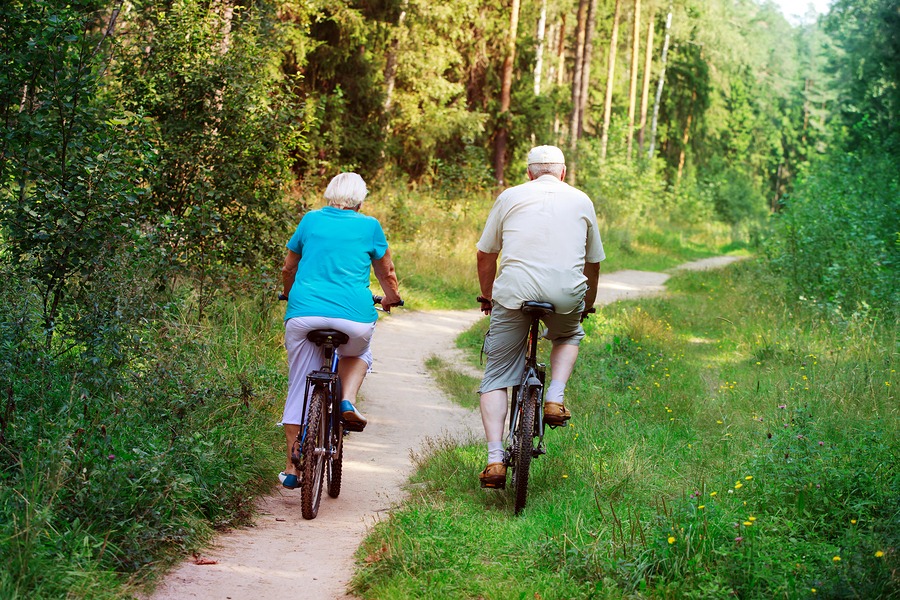When we’re young, we take our joints for granted. We just assume they’ll function as they should to let us move around freely and engage in the activities we want to.
As we age, however, that can become less and less true. Many people find their movement increasingly limited, diminishing their quality of life and preventing them from doing the things they love.
Even if you’re not experiencing joint problems now, there’s no time like the present to start taking care of yourself. Here are 9 easy ways to look after your joints right now.
- Move more. As tempting as it is to move less when your joints hurt, this will send you down a slippery slope to a sedentary lifestyle, which will make things worse over time. If you work at a desk, standing and stretching every half hour or so will help. Walking is good for you, so if you can substitute a short stroll for a car trip now and then, do it. Find little ways to move more that work for you. Even a little bit will help.
- Go low. Those who already enjoy exercise or people who are looking to start a program can choose low impact activities rather than ones that put strain on joints through running and jumping. Instead of jogging, choose walking or biking. If you like the vigorous workout of tennis, consider swimming for its low-impact aerobic benefits. Dancing is a fun and social way to get your heart rate up, and yoga builds up core strength.
- Flex it. If your joints are weak, build up your core through exercises targeted for the muscles that support them. A physical therapist can teach you a routine to help you improve the stability of your hips, knees and back. Most of these exercises can be done at home in the morning before you begin your day and don’t require special equipment. Ask your joint specialist for a recommendation.
- Pump up. No, don’t try power lifting! Instead, boost your diet with vitamins and supplements that have been shown to be helpful for joint health. These include fish oil, glucosamine, calcium, vitamins C, E and K, folic acid and others. However, be sure to confer with your joint specialist first and mention which medications you’re already taking to get the best advice.
- Get straight. Posture matters. Most of us don’t straighten our backs when sitting or standing, but it’s a habit that can be expensive in the long run, putting pressure on your other joints and potentially causing spinal issues. How do you know if your posture is good? Make your back as long as you can and don’t hunch forward. This applies when you’re watching TV too. Splaying out over the couch may seem comfortable, but it’s probably bad for you long-term.
- Be chill. Ice packs can be very helpful in reducing joint pain and swelling. While heat can feel good to many people, it’s a mistake to use a heating pad right after you’ve strained or injured a joint. Instead, start with ice, but only for about 15 or 20 minutes at a time, and be sure to wrap it in a towel to prevent frostbite. After about 48 hours, you can alternate the ice with heat, but remember not to leave either one on for long periods.
- Eat right. Nutrition is important for overall health and well-being, of course, but certain foods containing sugars and saturated fats can cause inflammation, which is bad for your joints. Some people also experience joint pain from eating dairy products and meat. You may need to experiment to see which things are causing you problems. On the other hand, anti-inflammatory foods like many nuts, fruits and veggies, plus certain types of fish, can have a positive effect. Do your research!
- Cut caffeine. As long as we’re talking inflammation, think about caffeine. For many of us, sipping on endless cups of coffee is how we get through our days, but too much of it can be bad for us. While studies seem to show some caffeine can actually reduce inflammation, drinking a lot of it can have the opposite effect, especially for people with rheumatoid arthritis. As with everything else, moderation is key.
- Stay sensible. Your footwear really matters. Shoes that afford poor support, or worse, put undue strain on the feet, ankles and knees can create all sorts of problems. If you’re on your feet a lot, make sure you have shoes that offer good support and stability. High heels are big culprits here—the Arthritis Foundation reports that the higher the heel, the more strain it puts on the inside of your knees. Save the spikes for special occasions.
Do it your way
Remember, for any self-improvement plan to be effective, you have to be willing to do it. Start with small changes you can make that don’t seem too tough and build from there. What works for others may not work for you, but find things that do and create a routine that you can stick to.
We only get one set of joints and they have to last us a lifetime. You’ll thank yourself later in life if you protect them now.
Already experiencing some joint issues? The experts at Flexogenix are here to help. Contact us today.






